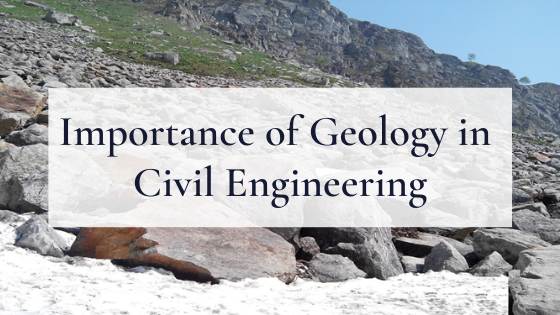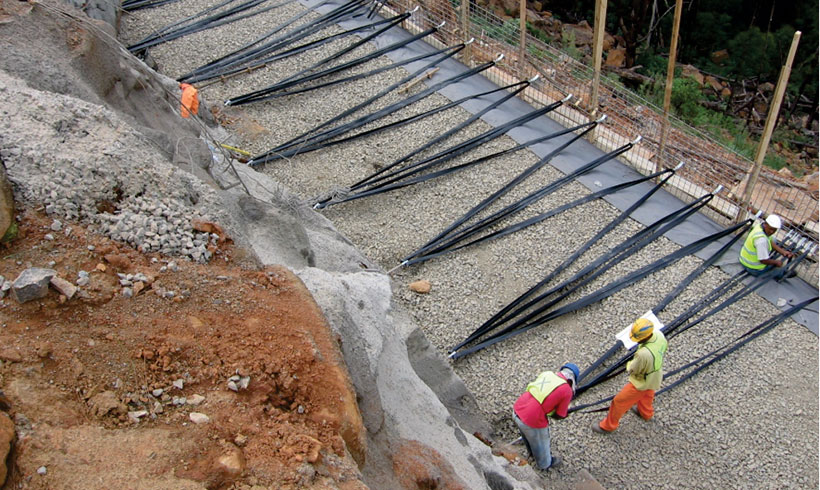Fascination About Geotechnical Engineering For Construction Projects
Fascination About Geotechnical Engineering For Construction Projects
Blog Article
Rumored Buzz on Geotechnical Engineering For Construction Projects
Table of ContentsGeotechnical Engineering For Construction Projects - The FactsFacts About Geotechnical Engineering For Construction Projects UncoveredGeotechnical Engineering For Construction Projects Fundamentals ExplainedGetting The Geotechnical Engineering For Construction Projects To WorkUnknown Facts About Geotechnical Engineering For Construction Projects6 Easy Facts About Geotechnical Engineering For Construction Projects ShownThe Main Principles Of Geotechnical Engineering For Construction Projects
Principles and Practice of Ground Renovation. Ground Enhancement Principles And Applications In Asia. Layout evaluation in rock auto mechanics.Cengage Knowing, Stamford, 666 p. Atkinson, J., 2007. The technicians of soils and foundations. Taylor & Francis, N.Y., 442 p. Floating Offshore Wind Wind Turbines: Actions in a Sea state Pareto Optimum Layouts and Financial Assessment, P. Sclavounos et al., October 2007. Nicholson, D, Tse, C and Dime, C. (1999 ). The Observational Method in ground engineering principles and applications.
Things about Geotechnical Engineering For Construction Projects
Research laboratory and field screening plays an important function in this process. By extracting samples from the planet's subsurface and using a suite of tests, geotechnical designers can anticipate the behavior of soil layers and review their suitability for various building efforts. The significance of geotechnical engineering in civil engineering can not be overstated, attributable to a number of factors: The first action in any geotechnical research study entails identifying the soil kind at the construction site.
The foundation acts as the bedrock of any type of building and construction job. Picking the ideal structure type is a choice that pivots on the comprehensive evaluation given by geotechnical design.

Geotechnical site investigation is an important action in the planning and implementation of any kind of construction project. It entails the collection and evaluation of data connected to the physical residential properties of dirt and rock beneath a suggested building and construction website. This info is essential for the layout and building and construction of risk-free, secure, and lasting structures.
The Geotechnical Engineering For Construction Projects Ideas
In this blog site, we will explore the value of geotechnical site examination, its numerous elements, and just how it benefits building tasks. Geotechnical site investigation, additionally understood as subsurface exploration, involves a series of tasks targeted at identifying the soil, rock, and groundwater conditions at a building and construction site. The key purposes are to identify potential geotechnical dangers, evaluate the design properties of subsurface products, and provide suggestions for the design and building and construction of structures, maintaining walls, and other frameworks.
The workdesk study assists in determining possible geotechnical problems and preparing the succeeding fieldwork. This involves observing the topography, water drainage patterns, existing structures, greenery, and any signs of instability or disintegration.
How Geotechnical Engineering For Construction Projects can Save You Time, Stress, and Money.
Shallow test pits are dug deep into to straight observe and sample the dirt and rock. This method serves for studying the top layers of the subsurface and determining near-surface hazards. Non-invasive geophysical approaches, such as seismic refraction, ground-penetrating radar (GPR), and electric resistivity tomography (ERT), are made use of to map subsurface conditions and identify anomalies.
Soil and rock examples gathered during the area investigation undergo lab screening to identify their physical and mechanical residential properties. Usual laboratory examinations include grain size evaluation, Atterberg limitations, compaction examinations, triaxial shear tests, and loan consolidation tests. These examinations give necessary data for geotechnical analysis and layout. The information accumulated from the desk research study, website reconnaissance, field investigation, and research laboratory screening are examined and interpreted to establish a comprehensive understanding of the subsurface conditions.
The primary benefit of geotechnical website investigation is making sure the security and security of frameworks. By understanding the subsurface conditions, engineers can develop structures and various other architectural elements that can endure the tons and ecological pressures they will certainly undergo. This minimizes the threat of settlement, decrease, and architectural failing.
Getting The Geotechnical Engineering For Construction Projects To Work
For instance, understanding dirt characteristics can guide the selection of excavation strategies, dewatering techniques, and ground enhancement measures. This ensures reliable and risk-free building methods. Geotechnical site examinations are often called for by developing codes and regulations. Sticking to these demands ensures conformity with legal and safety and security criteria, preventing potential lawful liabilities and task delays.
This info is important for task managers, designers, and contractors in creating sensible schedules, budget plans, and backup plans. Geotechnical Engineering for Construction Projects. Skyscraper in a Coastal AreaIn a seaside city, a skyscraper domestic structure was intended on a site with believed loose sand deposits and a high water table. A thorough geotechnical investigation, consisting of borehole boring, CPT, and geophysical studies, was performed
The Best Strategy To Use For Geotechnical Engineering For Construction Projects
Based upon these searchings for, the structure style was customized to include deep heap structures expanding right into steady strata, and ground enhancement techniques, such as vibro-compaction, were executed to reduce liquefaction threats. This proactive technique guaranteed the safety and stability of the structure while avoiding pricey post-construction removal. Infrastructure Development on a Sloping TerrainA major infrastructure task, entailing the construction of a freeway and bridges, was intended on an uneven terrain with steep inclines.
The Leaning Tower of Pisa (Italy), a legendary building marvel, is well known for its unplanned tilt from considerable geotechnical issues. The tower's foundation was improperly developed to deal with the soft, unstable soil beneath it, leading to unequal settlement and its distinctive lean. Our world is dotted with outstanding framework projectsfrom towering high-rise buildings to stretching bridgesall standing statement to the evolution of the numerous building equipment and techniques available.
Geotechnical design is a specialized area within civil design that concentrates on studying the habits of earth materials. This branch dives deep into the groundinvestigating just how the soil, rock, and groundwater at a building and construction website can influenceand be influenced bythe framework that we set up on and right into them. Before a solitary brick is laid or a concrete foundation put, geotechnical designers probe into the earthgathering crucial information concerning the site's soil make-up, click to read rock structure, and groundwater degrees.
Getting The Geotechnical Engineering For Construction Projects To Work

is a tool utilized to analyze the stability and load-bearing this hyperlink ability of piles during setup, leveraging the concept of wave breeding. It enhances building and construction efficiency by offering real-time analyses, thus making certain risk-free and reliable heap foundations. One of the useful applications of geotechnical design entails deciding and performing the best techniques for foundation building.
Stack driving represents greater than the simple act of putting structural elements into the ground. However, it is a carefully orchestrated process of moving a framework's lots past the much less secure dirt layers more detailed to the surfacedown to the a lot more significant strata that exist underneath. In the instance of heap driving, consider how geotechnical engineers expertly use this method to uniformly distribute the structure's weight.
Report this page